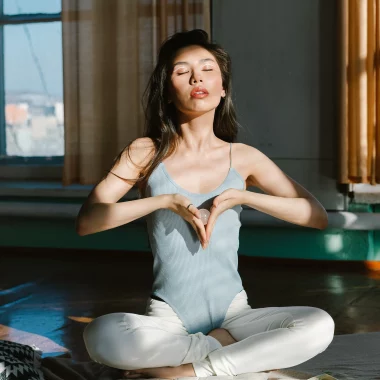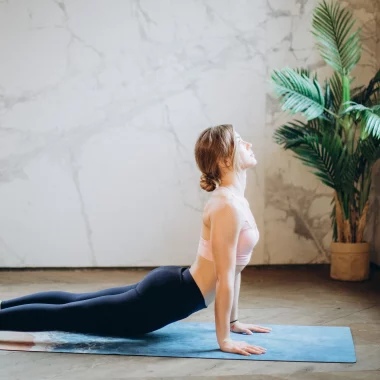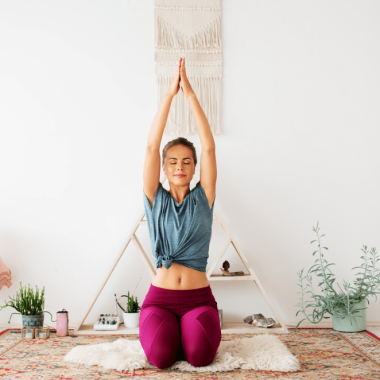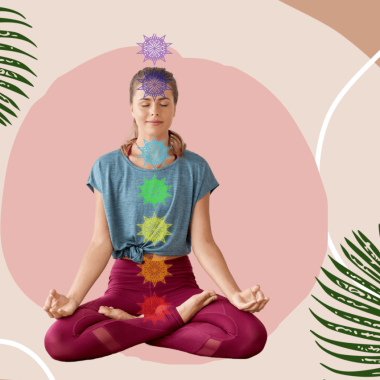written by Julstory editors
Yoga, in its many forms, brings together a series of practices that elevate human consciousness, merging the physical with the ethereal. At the heart of Kundalini Yoga, a tradition often dubbed the “Yoga of Awareness”, lies the fundamental principle of breath. This life-giving force, more than just a physiological function, acts as a bridge between our tangible body and the intangible realms of mind and spirit. Through purposeful breathing, Kundalini Yoga invites us to harness this bridge’s potential, channeling energy in a way that awakens our innate spiritual power. Breath, in this ancient art, is the silent symphony orchestrating our journey towards a harmonized self.
The Foundations of Pranayama
Derived from the Sanskrit words “Prana,” meaning life force or vital energy, and “Yama,” meaning control or regulation, Pranayama essentially translates to the control of life force. At its core, Pranayama isn’t just about breathing; it’s about harnessing and channeling the body’s inherent energy through deliberate breathwork.
Ancient yogic scriptures detail the art of Pranayama as a means to attain higher states of awareness and consciousness. The sage Patanjali, in his seminal work, the Yoga Sutras, extolled Pranayama as a pivotal step in the yogic path, placing it right after the mastery of physical postures or ‘asanas’. This chronology underlines the belief that once the body is prepared through asanas, it’s the breath that elevates the practitioner to deeper meditative states.
From the Vedic era to today’s global yoga movement, Pranayama remains an enduring testament to the transformative power embedded in our very breath.
Breath of Fire (Kapalabhati): An In-Depth Exploration
Among the myriad of pranayama techniques, the Breath of Fire, known traditionally as “Kapalabhati,” holds a distinct place, especially in the realm of Kundalini Yoga. The term “Kapalabhati” is derived from two Sanskrit words: “Kapala,” meaning skull, and “Bhati,” meaning shining or illuminating. True to its name, this technique is believed to bring about a radiant glow on the practitioner’s face, a manifestation of the inner cleanse it provides.
In Kundalini Yoga, the Breath of Fire isn’t merely a physical exercise; it is a potent tool to activate and balance the solar plexus chakra, Manipura, which governs personal power and transformation. By practicing this breath, one stokes the inner digestive fire, aiding in both metabolic and spiritual digestion.
Step-by-Step Guide to Practicing Breath of Fire:
- Posture: Sit in a comfortable cross-legged position, ensuring your spine is straight and shoulders are relaxed. Rest your hands on your knees, palms facing upwards in Gyan Mudra (index finger touching the thumb).
- Breathing Technique: Start with a few deep breaths. Now, exhale sharply and quickly through the nose, pulling your navel towards the spine. The inhalation will be passive, occurring naturally as you release the navel. The emphasis is on the forceful exhalation.
- Pace: In the beginning, maintain a moderate pace, gradually increasing the speed as you become more accustomed. Ideally, aim for 2-3 exhales per second.
- Duration: Start with a cycle of 30 seconds to a minute, gradually increasing the duration as your capacity builds.
- Eyes: In Kundalini tradition, the eyes are closed, focusing on the third-eye point (between the eyebrows).
- Completion: To finish, take a deep breath in, hold for a few seconds, and then exhale completely. Sit quietly for a moment, observing the sensations in your body.
Practicing the Breath of Fire regularly can ignite your inner vitality, enhancing both physical health and spiritual growth. However, always ensure you approach the technique with mindfulness, respecting your body’s limits.
Other Key Pranayama Techniques in Kundalini Yoga
Alternate Nostril Breathing (Anulom Vilom):
Rooted in the delicate balance of energies, Anulom Vilom is a practice of inhalation and exhalation through alternate nostrils. To practice, sit comfortably with a straight spine. Using the right thumb, block off the right nostril and inhale deeply through the left. Then, using the right ring finger, close the left nostril and exhale through the right. Now, inhale through the right nostril, switch fingers, and exhale through the left. This completes one cycle.
The benefits are profound: from harmonizing the left and right hemispheres of the brain, fostering mental clarity, to enhancing respiratory endurance and reducing stress.
Sitali (Cooling Breath):
In a world where burnout is common, Sitali Pranayama offers a refreshing respite. Begin by curling the sides of your tongue to form a tube. Inhale deeply and coolly through this “straw”, and then close the mouth and exhale slowly through the nose.
This breath technique is known for its cooling and calming effects, perfect for reducing excess heat in the body, calming the nervous system, and promoting mental tranquility. It’s especially beneficial during hot weather or after a vigorous yoga set.
Bhastrika (Bellows Breath):
Mimicking the operation of a bellows, Bhastrika is an energetic and rapid form of breathing. While seated, take a series of quick, forceful inhales and exhales through the nose, engaging the diaphragm and abdominal muscles fully. Think of it as a more intensified version of the Breath of Fire. With its invigorating nature, Bhastrika is renowned for enhancing lung capacity, boosting oxygen supply to the brain, and revitalizing the entire body. It also serves as a powerful energizer, shaking off any lethargy and awakening dormant energy.
Each of these pranayama techniques, deeply embedded in Kundalini traditions, serves as tools to harness the breath, guiding practitioners to deeper levels of physical well-being and spiritual discovery.
Physiological Impact of Pranayama
Pranayama, often perceived as a spiritual exercise, holds a significant place in the realm of physiology. Its effects on the human body are profound and scientifically substantiated.
Firstly, consistent pranayama practice has been linked to the activation of the parasympathetic nervous system, often referred to as the “rest and digest” system. This counters the often dominant sympathetic, or “fight or flight,” response triggered by modern-day stress. By engaging in breath control, the body experiences reduced cortisol levels, leading to a sense of calm and relaxation.
Secondly, pranayama techniques, especially those that emphasize deep and controlled breathing, aid in enhancing lung capacity and improving oxygenation. This ensures that every cell receives optimal oxygen, leading to better cellular function and overall health. The resultant increase in oxygen uptake can lead to improved stamina and endurance, especially beneficial for athletes and those engaging in physical activities.
Lastly, heart health is paramount, and pranayama delivers positive impacts here as well. Regular practice has been found to improve heart rate variability (HRV), an indicator of cardiac health and autonomic nervous system balance. A higher HRV signifies that the body is adept at responding to stress, thereby reducing the risk of cardiovascular ailments.
In essence, pranayama transcends the boundaries between the spiritual and the physiological, offering practitioners a holistic approach to well-being.

Mental and Emotional Benefits of Pranayama
Pranayama, while deeply rooted in ancient yogic traditions, resonates profoundly with modern-day challenges by offering a sanctuary for the mind and emotions. One of its standout benefits is the improvement in focus and concentration. As the mind syncs with rhythmic breathing patterns, distractions wane, allowing for sharper cognitive functions. This proves invaluable for tasks demanding prolonged attention.
Furthermore, in our high-stress environments, pranayama emerges as a natural antidote. Through controlled breathing, the mind experiences significant stress reduction and mood elevation, promoting a sense of well-being and emotional resilience.
Additionally, by anchoring the mind to the present breath, pranayama enhances mindfulness and presence. Practitioners often report a heightened awareness of the present moment, leading to a more enriched, conscious living experience.
In sum, pranayama offers a bridge to traverse from the turbulence of external chaos to the serenity of inner peace.
Precautions and Tips for Safe Practice
Embarking on a pranayama journey demands mindfulness. Firstly, maintain a proper posture—a straight spine ensures optimal airflow. Choose a calm environment free from distractions, enabling deeper concentration. While pranayama offers myriad benefits, certain techniques might not be suitable for everyone. For instance, pregnant women or those with cardiac concerns should avoid intense practices like Bhastrika. Always prioritize listening to your body; if discomfort arises, it’s a cue to adjust or pause. Remember, the essence of pranayama is not in intensity, but in consistent, attentive practice. Always approach it with respect and awareness for the safest experience.
Incorporating Pranayama into Daily Life
A daily pranayama routine need not be elaborate. Start with just a few minutes each morning, gradually increasing duration and complexity. Choose a quiet space, ensuring minimal interruptions. For those with packed schedules, pranayama can be interspersed throughout the day—short sessions during work breaks or stressful moments can revitalize the mind, acting as quick mental resets. Melding pranayama with other practices, be it a dynamic yoga sequence or still meditation, can amplify benefits, offering a more holistic mind-body experience. For instance, ending a yoga session with Anulom Vilom can ground and balance energies, while a stressful day might find relief through Sitali.
Final Thoughts
Pranayama, with its roots in the ancient wisdom of Kundalini Yoga, offers a timeless solution to modern challenges. Its transformative power, working subtly yet profoundly, beckons to be explored and experienced. Whether you seek physical wellness, mental clarity, or spiritual awakening, the breath holds the key. Dive into the world of pranayama, and let your breath be the gentle guide leading you to realms of peace, harmony, and inner radiance. Embrace the journey, and let every breath reveal a newer, more awakened you.








